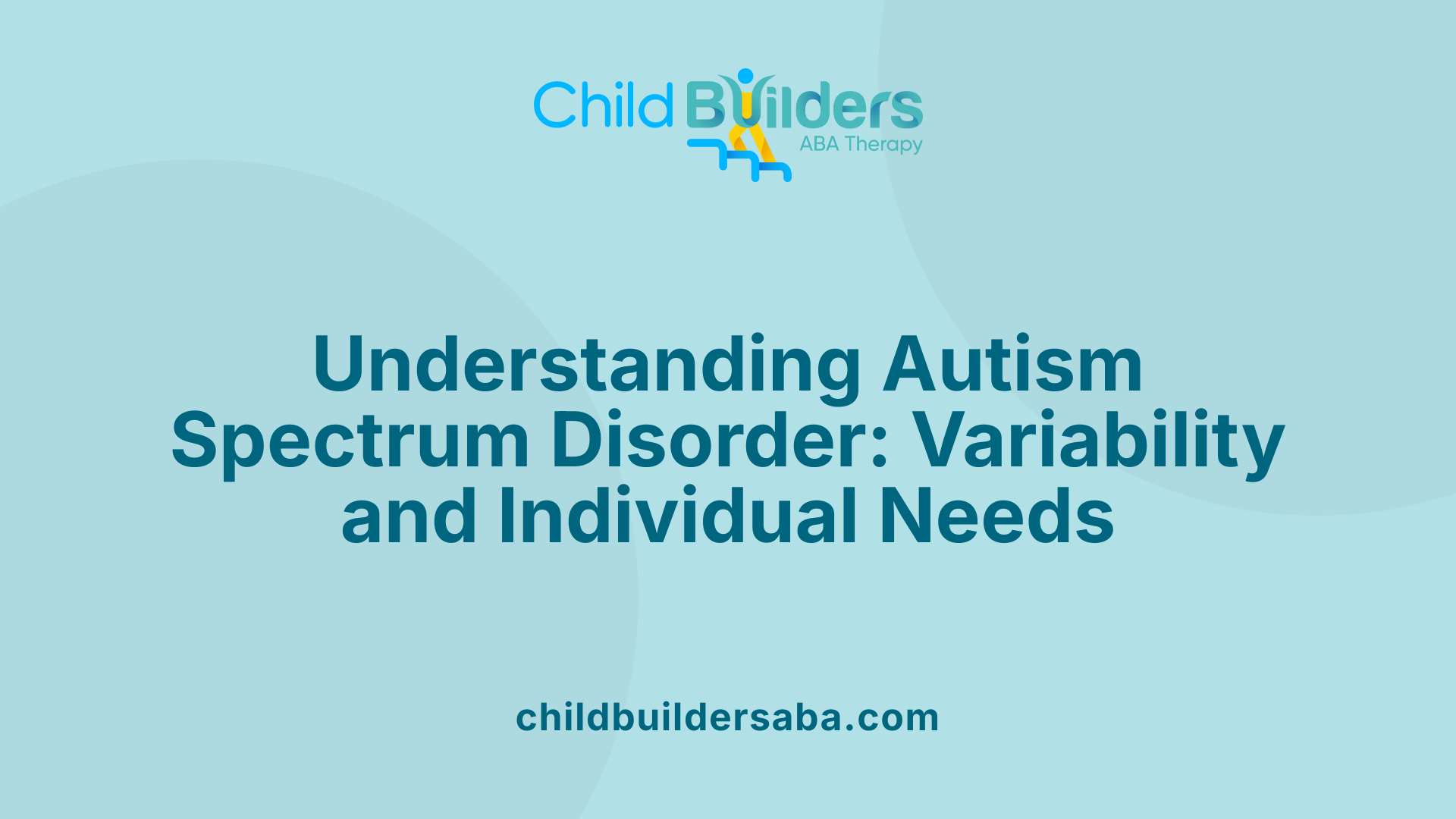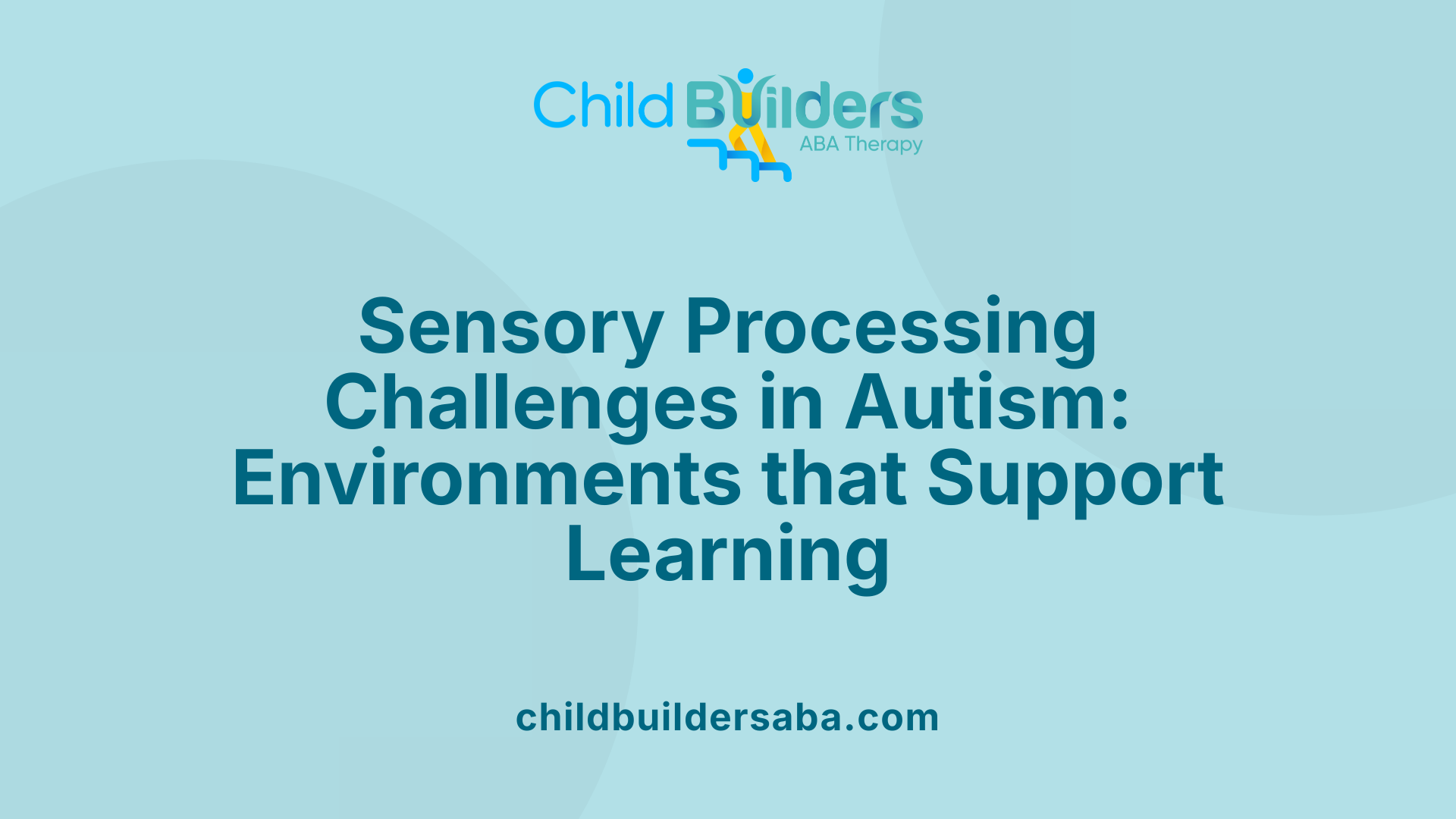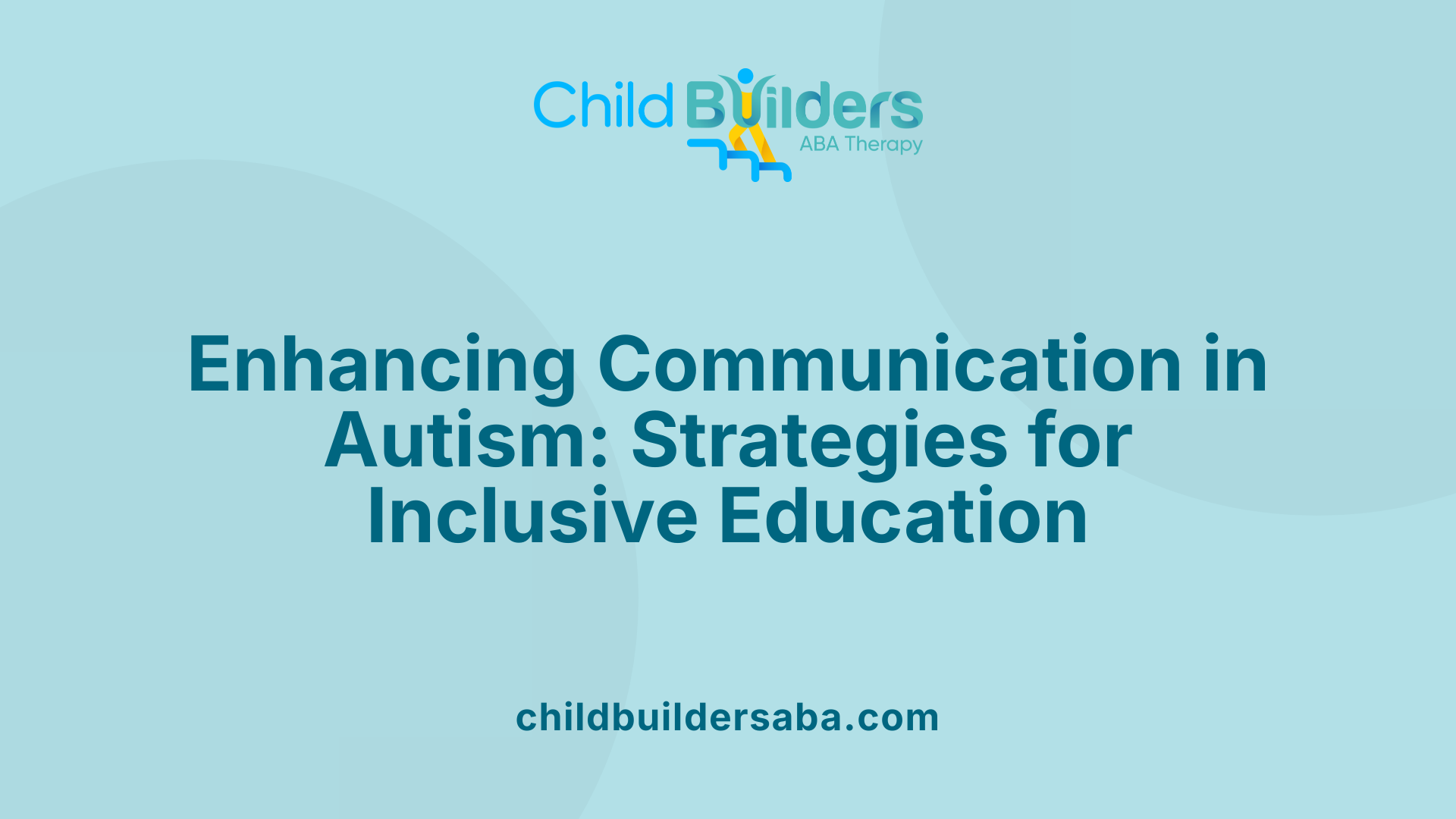Ways Autism Can Affect Learning

Exploring How Autism Affects Learning Processes
Autism Spectrum Disorder (ASD) is a complex neurodevelopmental condition that can influence various aspects of learning, from sensory processing to communication and cognitive skills. Recognizing how autism affects educational development is essential for educators, parents, and caregivers to create supportive learning environments and foster academic success for autistic children. This article explores the diverse ways autism impacts learning and provides strategies to support autistic learners effectively.
Core Characteristics and Variability in Autism

How does autism affect learning and cognition?
Autism spectrum disorder (ASD) impacts learning and thinking in multiple ways, which can vary considerably among individuals. Many autistic children face challenges related to sensory processing, such as hypersensitivity or hyposensitivity to sights, sounds, and textures. These sensitivities can make learning environments overwhelming or distracting, affecting focus and engagement.
Language and communication are often delayed, with some children experiencing difficulties in expressing themselves or understanding others. These delays can hinder academic participation and comprehension of new concepts. Moreover, executive functioning deficits—such as problems with planning, organization, and attention—can make completing tasks and adapting to new routines more difficult.
A notable percentage—the majority—of autistic individuals also have a learning disability, especially in reading skills. This overlap can further complicate learning, requiring tailored teaching approaches and additional support.
Support strategies like visual aids, structured routines, early intervention, and specialized therapies including speech therapy, sensory integration, and social skills training are essential. These tools help autistic children overcome hurdles, foster communication, and enhance their ability to learn effectively.
Understanding the diversity within the autism spectrum is crucial. Some individuals have high support needs, requiring full-time care, while others live independently with minor accommodations. Recognizing each person’s unique profile allows educators and families to create supportive, inclusive learning environments that respect diverse strengths and challenges.
Characteristics of autism spectrum disorder
- Variations in social skills and communication
- Repetitive behaviors and focused interests
- Sensory sensitivities and motor differences
- Variability in support needs
Diagnostic levels and support needs
| Level | Support Required | Typical Needs | Examples |
|---|---|---|---|
| Level 1 | Requiring support | Mild difficulties, some support | Social cues, organizational strategies |
| Level 2 | Requiring substantial support | Significant support needed, noticeable difficulties | Social skills training, visual supports |
| Level 3 | Requiring very substantial support | Intensive support, high needs | Full-time assistance, specialized interventions |
Diverse profiles of autistic learners
- Verbal or non-verbal communication skills
- Varying cognitive abilities and learning disabilities
- Preferences for visual, auditory, or kinesthetic learning
- Range of sensory sensitivities and behavioral patterns
This range of profiles underlines the importance of individualized education programs (IEPs) and flexible teaching strategies to meet each student's unique needs.
Sensory Processing Differences and Their Impact

What are the main challenges faced by autistic learners in educational environments?
Autistic students often encounter a variety of sensory processing issues that make school environments particularly challenging. These include hypersensitivity, hyposensitivity, difficulties with sensory integration, and sensory seeking behaviors. Such differences can significantly disrupt focus, engagement, and social interactions.
Hypersensitivity refers to an overreaction to sensory stimuli like sounds, lights, or textures, which might cause discomfort or sensory overload. Conversely, hyposensitivity involves under-responsiveness, leading children to seek additional stimulation to stay alert.
Sensory integration difficulties can make it hard for autistic children to process multiple sensory inputs simultaneously, affecting their ability to follow instructions or participate fully in classroom activities.
Some children exhibit sensory seeking behaviors, such as touching objects or moving excessively, which can distract them and interfere with their learning and social relationships.
To support autistic learners effectively, educators can implement strategies like sensory-friendly environments—calm spaces, appropriate lighting, and noise control—and incorporate sensory breaks into routines. These accommodations help reduce sensory overload and promote better concentration, allowing students to engage more comfortably and effectively in their educational journey.
Communication Challenges in Learning Contexts

How does autism affect communication in learning contexts?
Autism can significantly influence how children and students communicate in educational settings. Many autistic learners experience delays in speech development, both expressive (speaking and expressing ideas) and receptive (understanding spoken language). This can hinder their ability to participate fully in classroom discussions, follow instructions, and grasp new concepts.
Some children with autism are non-verbal or use limited speech. Instead, they might rely on alternative methods like sign language, picture exchange systems, or communication boards to express themselves. These methods help bridge the communication gap but require support and understanding from teachers and peers.
Understanding social cues — such as body language, facial expressions, and gestures — can be challenging for autistic students. This difficulty can lead to misunderstandings, making social interactions more complex and affecting collaborative learning opportunities. When children struggle to interpret or convey emotions, forming peer relationships and engaging in group activities become more difficult.
In classroom environments, these communication differences can impact participation, sleep engagement with curriculum content, and the ability to share ideas effectively. Teachers and support staff can facilitate communication by employing visual aids, clear and concrete language, and providing ample time and patience for responses.
Supporting strategies like social stories, tailored communication plans, and speech therapy can help autistic students improve their expressive and receptive language skills. Overall, recognizing and accommodating these communication differences are essential for creating inclusive and supportive learning environments.
Executive Function and Learning Skills
How does autism affect learning and cognition?
Autism influences learning and thinking in many ways, often due to differences in brain development. These differences can lead to sensory processing challenges like hypersensitivity to sounds or lights, which can make classrooms overwhelming and distract from learning. Many autistic individuals also have learning disabilities; in fact, about 60-70% also struggle with reading and other academic skills.
Communication delays are common, with some children experiencing difficulties in expressive (speaking) and receptive (understanding) language, which affect their ability to grasp new concepts and participate in class discussions. Moreover, autism often involves deficits in executive functioning—the mental skills needed to plan, organize, and manage tasks. This can manifest as trouble with planning ahead, remembering instructions, focusing attention, or adapting to changes.
Support strategies such as visual aids, structured routines, sensory breaks, and tailored therapies like speech therapy or sensory integration can greatly improve learning experiences. Creating a supportive environment that accommodates these differences helps children with autism succeed academically and socially.
Educational Strategies and Classroom Supports
How can educators support autistic students in learning environments?
Supporting autistic students effectively requires a combination of thoughtful strategies tailored to their unique needs. Educators can start by establishing structured routines and visual supports, such as visual schedules and cues, to create predictability and reduce anxiety. These supports help students understand daily expectations and transitions, making the classroom environment more comfortable.
Creating sensory-friendly environments is also crucial. Teachers can adjust lighting by using natural or soft lighting, minimize loud noises, and provide calming spaces or sensory breaks that allow students to self-regulate. Incorporating tools like noise-canceling headphones or tactile toys can further reduce sensory overload.
Communication should be clear and consistent. Using simple, concrete language and visual aids ensures that instructions are understood. Positive reinforcement strategies encourage desired behaviors, boosting confidence and motivation.
Building an inclusive class culture involves respecting each student’s communication preferences, whether verbal, non-verbal, or augmented communication methods like picture exchange or signing. Teachers should foster social interactions by pairing students with supportive peers and involving role-playing or social stories.
Collaboration with families and specialists is essential for developing personalized learning plans that address specific sensory sensitivities, communication styles, and learning goals. Continual assessment and adaptation of support strategies ensure that each student’s evolving needs are met.
In summary, using visual supports, creating sensory-friendly spaces, providing clear instructions, and fostering a respectful, inclusive environment can significantly enhance learning outcomes and overall well-being for autistic students.
Supporting Autism in Schools: A Holistic Approach

What educational considerations are important for supporting autistic learners?
Supporting autistic students in educational settings needs a thoughtful and personalized approach. Each learner has unique strengths, challenges, and learning styles that require tailored strategies.
Creating structured routines and visual supports helps make the classroom environment predictable, easing anxiety and improving understanding. Visual schedules, cue cards, and clear signage assist students in navigating daily tasks and transitions.
Sensory accommodations are also crucial. Sensory-friendly spaces and tools like noise-canceling headphones, calming lights, or textured toys can reduce sensory overload, helping students stay engaged and focused.
Effective teaching practices include using concrete, clear communication, with visual aids and augmentative supports when needed. Social skills training and peer-mediated activities promote social interaction and inclusion.
Positive reinforcement encourages desired behaviors and motivates learners, while differentiated instruction ensures that lessons meet diverse needs.
Collaboration is vital: teachers should work closely with families and specialists like speech-language pathologists, occupational therapists, and behavioral therapists. This teamwork fosters consistency, set appropriate goals, and implement effective accommodations.
Finally, continuous professional development for educators is essential. Staying current with evidence-based strategies enables teachers to adapt their methods, support each child's development, and create an inclusive, supportive classroom for all students.
Legal and Ethical Aspects of Supporting Autistic Students
Understanding Disability Rights Laws for Autistic Students
Federal laws such as the Individuals with Disabilities Education Act (IDEA), Section 504 of the Rehabilitation Act, and the Americans with Disabilities Act (ADA) provide essential protections for autistic students. These laws guarantee the right to receive appropriate educational services, accommodations, and non-discriminatory treatment.
Developing Individualized Education Programs (IEPs) and Providing Accommodations
For students with autism, IEPs are customized plans that outline specific educational goals and necessary supports. Accommodations—such as sensory-friendly environments, visual supports, or flexible scheduling—are tailored to meet individual needs and are rights, not privileges. They should be implemented as part of the IEP or 504 plan to enable equal access to learning.
Respecting Communication Preferences
Autistic students may prefer different communication styles, including person-first (person with autism) or identity-first (autistic individual) language. Recognizing and respecting these preferences is essential for fostering a respectful and inclusive learning environment. Teachers and parents should collaborate to ensure that communication supports align with each child's comfort and needs.
Creating an inclusive education setting involves understanding legal protections, tailoring supports appropriately, and honoring individual communication choices to uphold the dignity and rights of autistic students.
Building Inclusive Classrooms and Social Skills Development

Fostering social inclusion
Creating a welcoming classroom environment is essential for autistic students to thrive socially. Teachers can promote social inclusion by encouraging positive interactions and understanding among all students. Using activities that highlight diversity and teaching inclusive behavior helps build mutual respect.
Teaching about autism and diversity
Educating students about autism and neurodiversity fosters empathy and acceptance. Incorporating lessons about different ways people communicate, learn, and experience the world can dispel misconceptions and reduce stigma. Visual aids, stories, and discussions support understanding and acceptance.
Peer supports and role models
Peer support programs involve students helping each other navigate social situations. Role models who demonstrate respectful and supportive behaviors can significantly influence social integration. These strategies empower autistic students and enrich the classroom community.
Strategies for effective inclusion
- Use visual supports and clear routines to reduce anxiety.
- Organize social skills groups and peer mentoring.
- Incorporate sensory-friendly spaces and activities.
- Provide differentiated instruction catering to diverse learning needs.
Creating a supportive, inclusive environment not only benefits autistic students but promotes kindness and understanding for all learners, leading to more positive social relationships and academic success.
Fostering Inclusive Learning Environments
Autism's impact on learning is multifaceted, affecting sensory processing, communication, cognition, and social interactions. Recognizing these influences allows educators, parents, and caregivers to implement targeted strategies that support autistic students' educational success. By fostering inclusive and supportive environments, we can help all learners thrive academically, socially, and emotionally, ensuring that autism does not hinder their potential for growth and achievement.
References
- How Does Autism Affect Learning - Forbrain
- How general education teachers can support students with ASD
- The Impact of Autism on Education
- ASD Classroom Difficulties - Lighthouse Autism Center
- How Does Autism Affect Learning? | Neurosensory
- Varying support needs - National Autistic Society
- Autism in the classroom: Strategies for success
- How general education teachers can support students with ASD
- Setting Up Supportive Classrooms - VCU Autism Center for Education



.jpg)

































































































